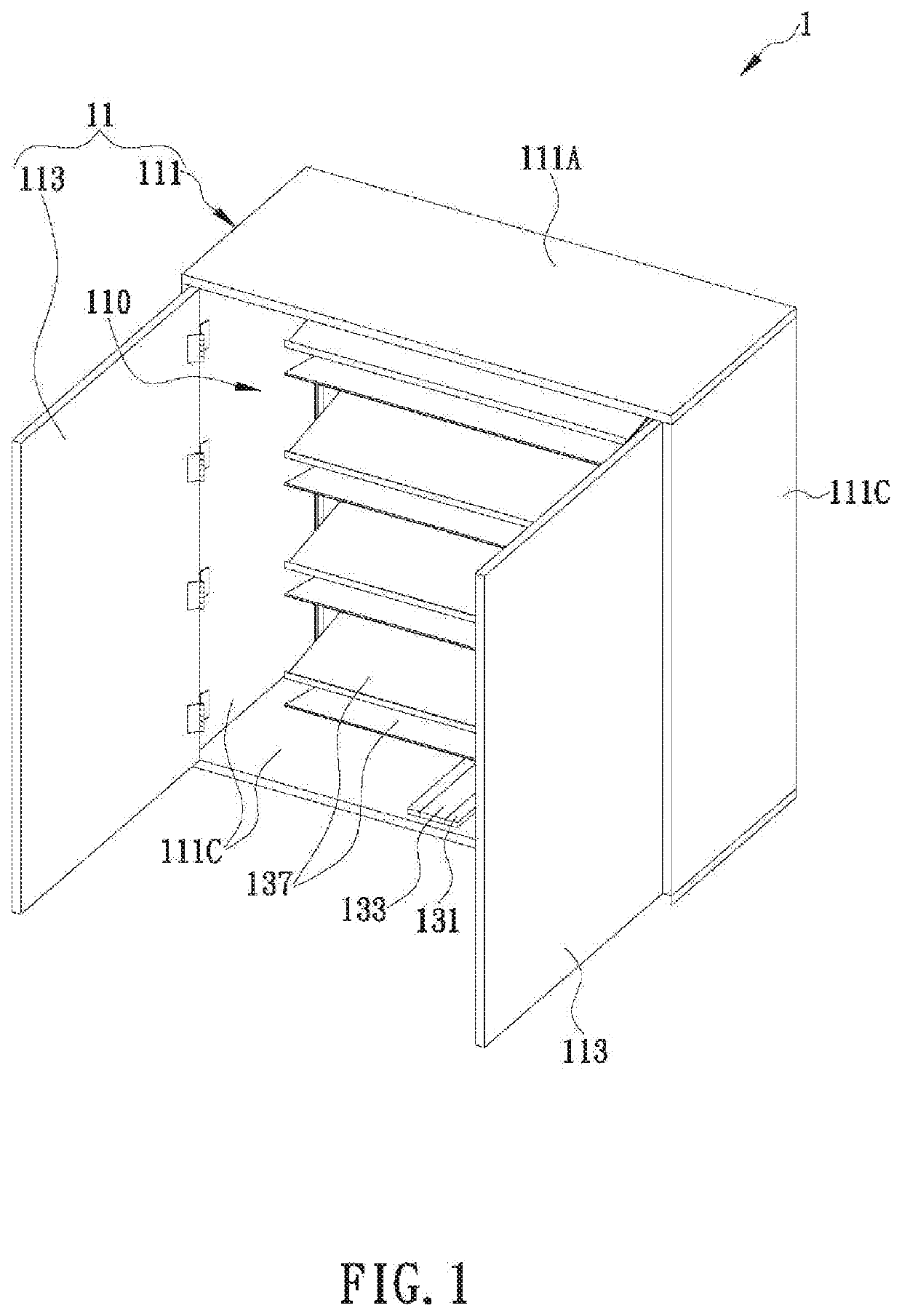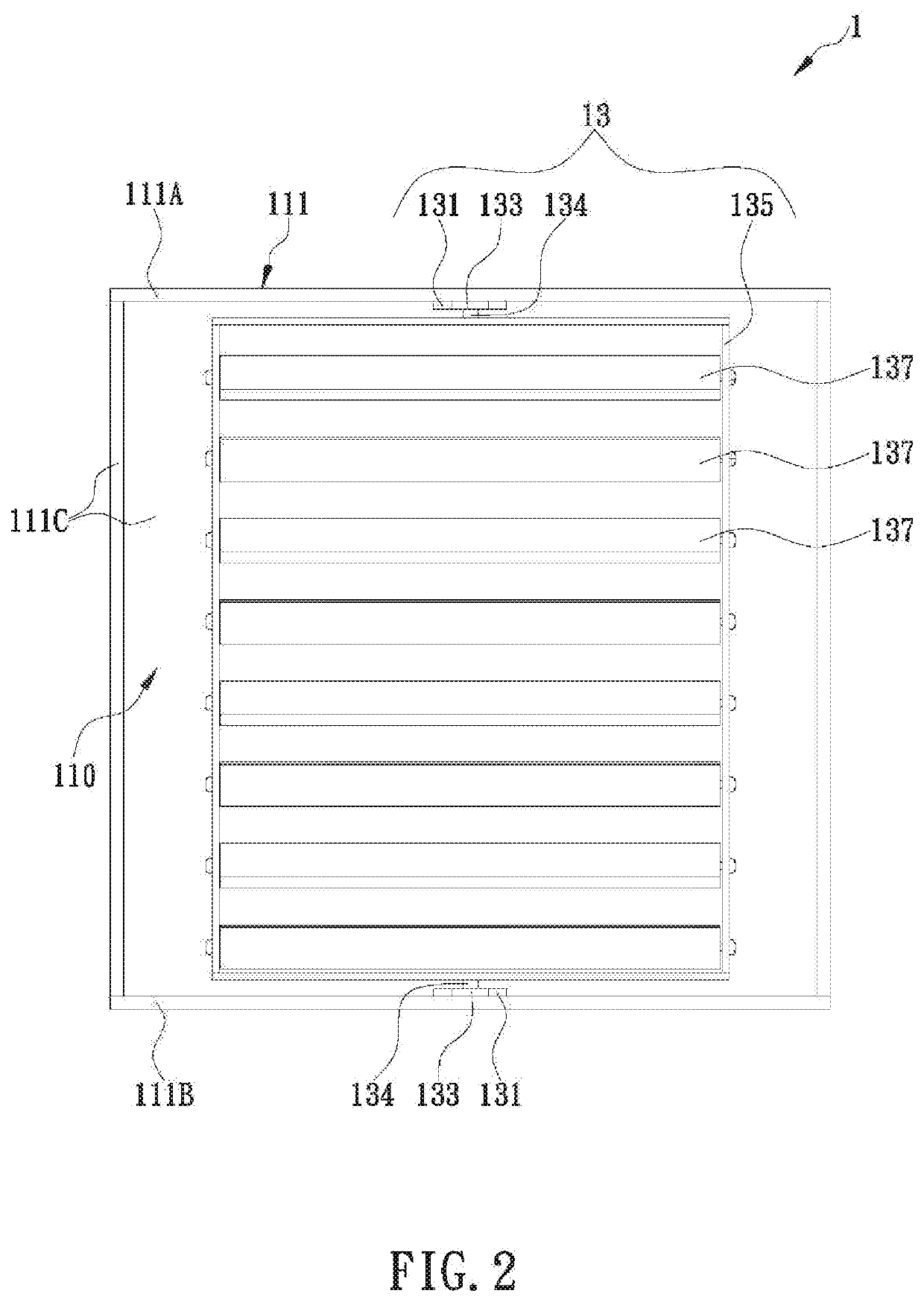Cabinet structure for storing at least one shoe
a shoe cabinet and shoe technology, applied in the field of shoe cabinets, can solve the problems of reducing the available storage space in the shoe cabinet, trouble for families, and inefficient use of the empty space in the cabinet, and achieve the effect of easy rotation of the fram
- Summary
- Abstract
- Description
- Claims
- Application Information
AI Technical Summary
Benefits of technology
Problems solved by technology
Method used
Image
Examples
Embodiment Construction
[0023]The present disclosure provides a cabinet structure for storing at least one shoe. In certain embodiments, as shown in FIG. 1, the cabinet structure 1 for storing at least one shoe includes a body 11 and a sliding frame set 13. To facilitate description, the top side of each component described herein is defined as the side facing the top edge of FIG. 1, the bottom side of each component is defined as the side facing the bottom edge of FIG. 1, the front side of each component is defined as the side facing the lower left corner of FIG. 1, and the rear side of each component is defined as the side facing the upper right corner of FIG. 1. The configuration of the cabinet structure 1 is by no means limited to that shown in FIG. 1, and all the components of the cabinet structure 1 may be adjusted in configuration according to product requirements, provided that the cabinet structure 1 has the essential structures and effects disclosed below.
[0024]As shown in FIG. 1, the body 11 inc...
PUM
 Login to View More
Login to View More Abstract
Description
Claims
Application Information
 Login to View More
Login to View More - R&D
- Intellectual Property
- Life Sciences
- Materials
- Tech Scout
- Unparalleled Data Quality
- Higher Quality Content
- 60% Fewer Hallucinations
Browse by: Latest US Patents, China's latest patents, Technical Efficacy Thesaurus, Application Domain, Technology Topic, Popular Technical Reports.
© 2025 PatSnap. All rights reserved.Legal|Privacy policy|Modern Slavery Act Transparency Statement|Sitemap|About US| Contact US: help@patsnap.com



